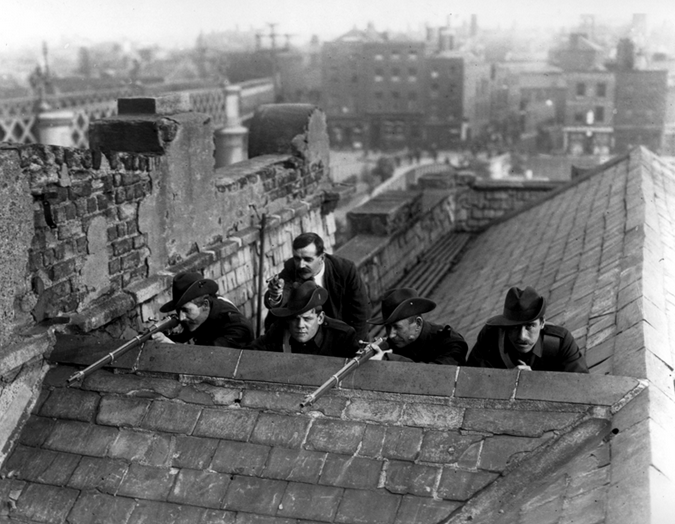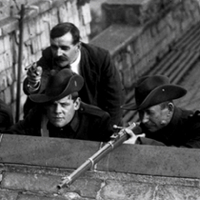 I assigned my preservice teachers at University of Portland the task of using Learnist to design a document based question that would eventually become part of a class-produced DBQ iBook collection. DBQ assignment here. More samples of student-designed DBQs here.
I assigned my preservice teachers at University of Portland the task of using Learnist to design a document based question that would eventually become part of a class-produced DBQ iBook collection. DBQ assignment here. More samples of student-designed DBQs here.
I’ve asked them to reflect on the assignment and invited them to guest post on my blog. Here is The Irish Revolutionary Period designed by Peter Gallagher. It challenges students to think about the timing, participants, and significance of the Irish War of Independence, ensuing Civil War, and continued conflict over the country’s partition.
See Peter’s chapter in our class-designed iBook – free at iTunes.
You can find Peter’s posts on our class blog.
Peter Gallagher reflects on what he learned from the experience:
I learned that the process of putting together a DBQ can be especially difficult as a teacher, because it requires one to step back and allow the students to connect the dots, rather than doing the work for them.
When I set out to begin my DBQ assignment, the scope was wide and the learning rather shallow. I realized fairly early on that I was looking at a yearlong unit rather than an isolated DBQ assignment, and set out to narrow my focus. I settled on the Irish Revolution, often called the Anglo-Irish War, as the subject of my DBQ. The revolution encompassed many of the points I had hoped to make in the larger unit on revolution, so it seemed like a good platform from which to teach. I had wanted to teach students about the relatively transient elements to many revolutions, that they are progressions rather than moments, summations rather than beginnings. The primary skill taught within the lesson would be the reading of primary documents as a means of historical inquiry. Once I narrowed the focus of my DBQ, I found it much easier to teach said skill. Rather than picking and choosing from a vast array of primary documents that, in some way or another, represented a 20th century revolution, the selection of ten images, documents, and artistic renderings of the Irish Revolution allowed for a deeper understanding of revolutionary sentiment at the outset of the 1900’s.
The final project, entitled “Easter, 1916” explores the context, players, and legacy of Easter Week 1916. I tried as best I could to limit the contextual history and allow the documents to speak for themselves, though it could be difficult at times. The topic is one I’m very familiar with, so it took a bit of effort to exclude my editorial inclinations. I feel the project is fairly well-rounded, though I would like a chance to supplement the DBQ with some background lessons. I learned that the process of putting together a DBQ can be especially difficult as a teacher, because it requires one to step back and allow the students to connect the dots, rather than doing the work for them. I’m happy with the product, and its one I’m bound to use in future lessons, wherever I end up teaching.
Image Credit: Camera Press Ireland – Irish Citizen Army (ICA) men on a Dublin rooftop during the Easter uprising

